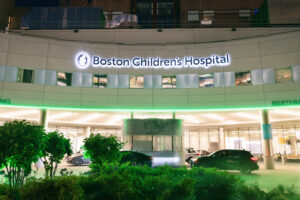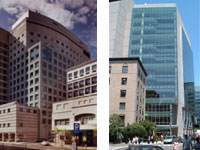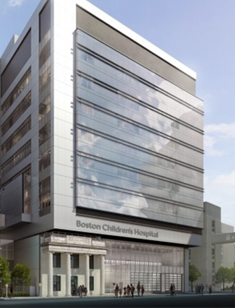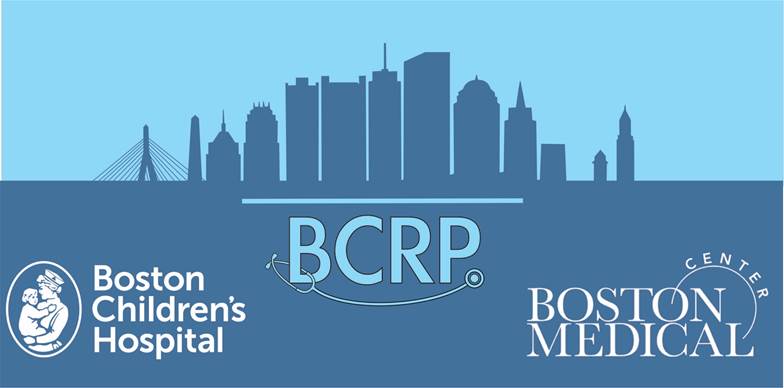Boston Children’s Hospital

Statistics
• 466 beds
▻ 40 bed medical-surgical ICU
▻ 40 bed cardiac ICU
▻ 30 bed neonatal ICU
▻ 22 bed medical ICU
▻ 24 bed intermediate care ICU
▻ 13 bed stem cell transplantation unit
▻ 6 bed clinical research center
• 22,434 inpatient admissions
• 27,813 surgical procedures (1,053 cardiac)
• 5,547 endoscopies
• 730,167 outpatient visits
• 60,360 emergency department visits
• 1,377 active medical and dental staff
Boston Children’s Hospital is one of the largest pediatric hospitals in the United States, and a major teaching facility of Harvard Medical School. Founded in 1869 as a 20-bed hospital for children, it is now a comprehensive medical center for infants, children, adolescents and adults with congenital diseases, dedicated to excellence in patient care, teaching and research.
There are 477 inpatient beds distributed on five floors in the Main hospital building, Main South, the state-of-the-art Mandell building and the new Hale Tower (opened June 2022). The hospital contains a 40-bed multidisciplinary intensive care unit, 22-bed medical intensive care unit, 30-bed neonatal intensive care unit, 40-bed cardiac intensive care unit, 24-bed intermediate care unit, 13-bed bone marrow transplantation unit and six-bed clinical research center. On July 1, 2022, Tufts Children’s Hospital closed its inpatient beds, PICU, and Oncology and Stem Cell Units, and Children’s assumed care for those patients at its main facility. Children’s has physician services agreements for inpatient pediatrics, emergency medicine and/or newborn medicine at Beverly Hospital, Cape Cod Hospital, Charlton Memorial Hospital, Milford Hospital, St Luke’s Hospital, South Shore Hospital, Tobey Hospital and Winchester Hospital. In addition, Children’s is now coordinating pediatric care with the Tufts Medical Centers affiliated sites at Lowell General Hospital, Lawrence General Hospital and Brockton Hospital.
There are several hundred outpatient programs ranging from primary care to a wide variety of specialty programs. Outpatient facilities include an 11-story building for ambulatory services, the Adolescent/Young Adult Program, Children’s Hospital Primary Care at Longwood, and Martha Eliot Health Center, an affiliated neighborhood health center. In addition, outpatient services are provided at Children’s satellite centers or physician offices in Brockton, Lexington, Milford, North Dartmouth, Peabody, Waltham, Weymouth and Worcester Massachusetts.
Hunnewell Building

This famous “green-domed” building with its classic columned facade on Longwood Ave was built in 1914 and is the oldest building in the Children’s complex. To many it is the symbol of the institution. Today, it mostly houses administrative offices, including the Department of Pediatrics, which is located on the 2nd floor. The copper dome covers an internal atrium. It was re-clad about a 30 years ago and is only beginning to recover its verdigris hue.
Main South

This 11-story clinical building is an extension of the hospital’s existing Main Building. The building includes cardiac, medical and multidisciplinary ICU beds, a medical intermediate care unit, a cardiac catheterization lab, inpatient echocardiography, medical and surgical patient beds, operating rooms, interventional radiology space and administrative office space.
Mandell Building

This 10-story state-of-the-art clinical building contains space for the Emergency, Radiology, Surgery, Neurology, and Pharmacy services. There are four floors of single bed inpatient rooms that align with floors in the existing hospital, and a neuroimaging suite.
Fegan Building
This 12 story building sits in the middle of the Children’s campus, between the Hunnewell building and the Main Hospital, and houses Children’s ambulatory programs and many clinician’s offices.
Enders Research Laboratory, Center for Life Sciences Building, Warren Alpert Building, 2 Brookline Place (cognitive neurology research and research MRI), Autumn Street Building for Clinical Research and the Karp Family Research Laboratory

The 13-story John F. Enders Laboratories for Pediatric Research, named for the Nobel Prize recipient who cultured the polio and measles viruses, the 12-story state-of-the-art Karp Family Research Laboratories; and portions of the neighboring buildings: Center for Life Science Boston, Harvard Institute of Medicine, the Autumn Street Building, 2 Brookline Place and Warren Alpert Building at HMS, add up to more than 1,000,000 square feet of research space. These buildings contain basic scientists and physician investigators in virtually every specialty, more than 1,100 in all. The hospital faculty includes 13 members of the National Academy of Sciences, 28 members of the National Academy of Medicine, 23 Fellows of the American Academy of Arts and Sciences, and 12 members of the Howard Hughes Medical Institute and a level of research that rivals the very best research institutes in the world. Funding for research at Boston Children’s Hospital equals $518 million and is greater than all other pediatric hospitals in the United States.
Boston Children’s Hospital is also a leader in clinical research. The clinical research program has extensive support services, including biostatisticians, epidemiologists, database programmers, data coordinators and clinical research coordinators who provide consultation to clinical investigators. The hospital also has one of the oldest and largest NIH-funded Clinical Research Centers in the country.
Hale Family Building

The new Hale medical tower, which opened in June 2022, added 150 new beds to Boston Children’s Hospital, allowing for the elimination of the few remaining double rooms and growing the total bed count to 466. The core of the new building houses a state-of-art cardiovascular institute, including outpatient clinics, inpatient unit intensive care unit, catheterization labs, and dedicated operating suite. Other programs in the new tower include a 30-bed neonatal intensive care unit, a surgical floor dedicated primarily to transplantation, operating rooms, and imaging facilities.



